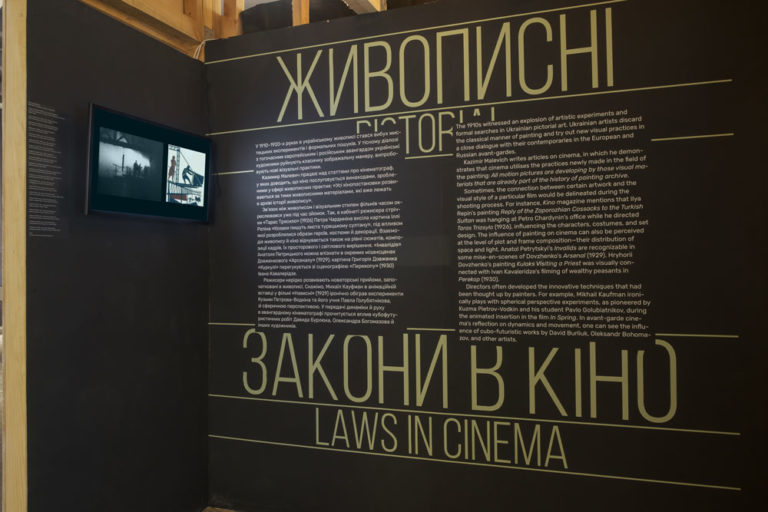PICTORIAL LAWS IN CINEMA

Vasyl Krychevskyi‘s sketches to the film Taras Shevchenko (1926)
The two-storey wooden structure is devoted to the images in the art of painting and photography; and they eventually synthesise in a cinematic image, on which a film director, a cameraman and a production designer worked side-by-side.
It is difficult to overestimate the artist’s role on the filming location in the 1920s as they did not only design the scenery and costumes but were also involved in stage setting, and together with the cameraman they thought over the lighting in the shot.
Before starting to work on the motion pictures, VUFKU cameramen often worked with photography, and that is how three most famous “men with a camera”, Danylo Demutskyi, Oleksii Kaliuzhnyi, and Mikhail Kaufman, got into the profession. In the video on camerawork, you can see various methods and techniques used by the cameramen, pioneers of the silent film. It is their experiments that television and clip making actively use nowadays.
The artistic and cinematic environments of the 1920s are closely connected. Oleksandr Dovzhenko who worked as a caricaturist and drew posters for VUFKU trained to be an artist. Suprematist Kazimir Malevich stated in his somewhat provocative article Painterly Laws in the Problems of Cinema (1929) that “all film productions are developing on the same painterly materials that are stored in the archive of the history of painting,” and suggested that the mutual influence of painting and cinema should be studied more closely. And that is what we did when we compared some famous paintings with fragments from VUFKU films.